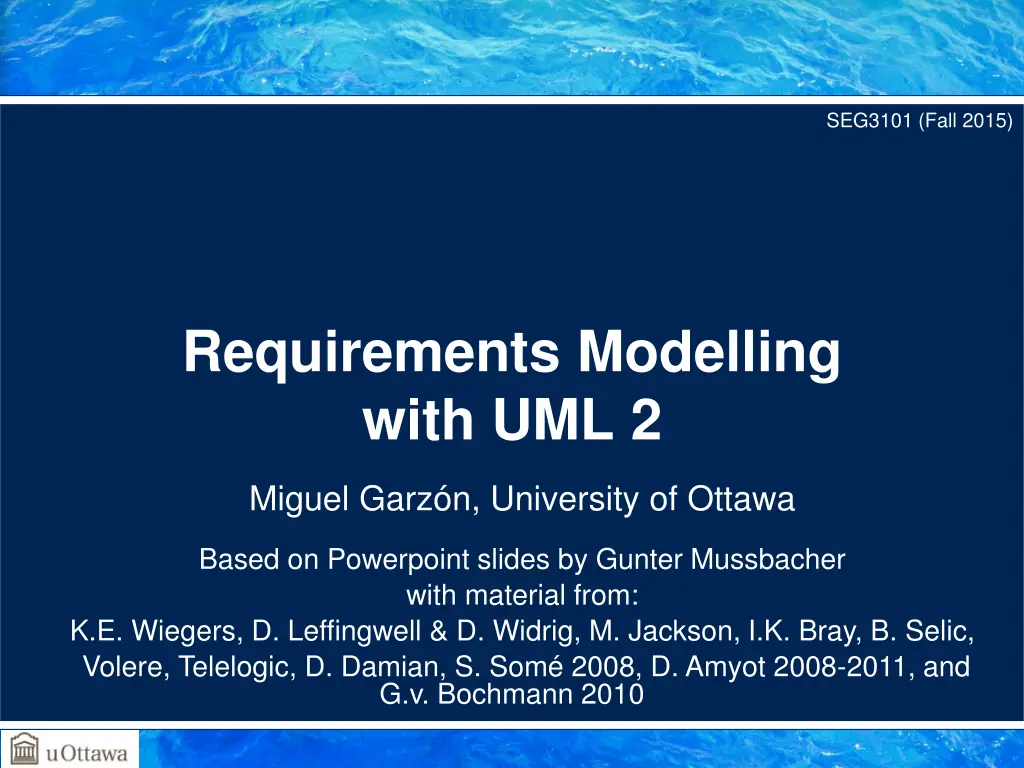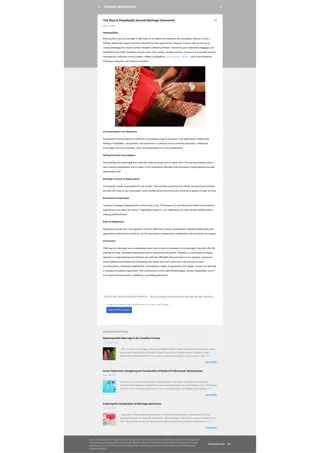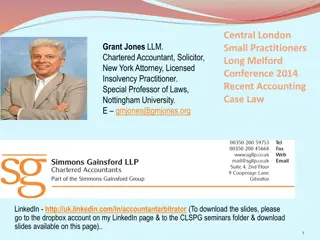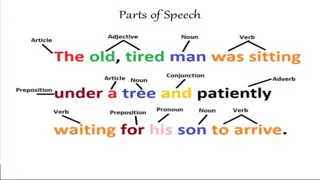
Requirements Modelling with UML 2 - Introduction and Diagram Types
Explore the world of Requirements Modelling with UML 2 through an introduction to key concepts and various diagram types, including Class Diagrams, Activity Diagrams, Sequence Diagrams, and State Machine Diagrams. Understand the basic notational elements and examples to enhance your understanding of system dynamics.
Download Presentation

Please find below an Image/Link to download the presentation.
The content on the website is provided AS IS for your information and personal use only. It may not be sold, licensed, or shared on other websites without obtaining consent from the author. If you encounter any issues during the download, it is possible that the publisher has removed the file from their server.
You are allowed to download the files provided on this website for personal or commercial use, subject to the condition that they are used lawfully. All files are the property of their respective owners.
The content on the website is provided AS IS for your information and personal use only. It may not be sold, licensed, or shared on other websites without obtaining consent from the author.
E N D
Presentation Transcript
SEG3101 (Fall 2015) Requirements Modelling with UML 2 Miguel Garz n, University of Ottawa Based on Powerpoint slides by Gunter Mussbacher with material from: K.E. Wiegers, D. Leffingwell & D. Widrig, M. Jackson, I.K. Bray, B. Selic, Volere, Telelogic, D. Damian, S. Som 2008, D. Amyot 2008-2011, and G.v. Bochmann 2010
Introduction Class Diagram Activity Diagram Sequence Diagram State Machine Diagram History of UML (http://www.omg.org/uml/) Rumbaugh Booch Jacobson http://www.omg.org/uml/ Official Version 2.4.1 (August 2011) UML 2.5 Beta simplified : 831 pages! Source: http://en.wikipedia.org/wiki/Unified_Modeling_Language 2 SEG3101. Requirements Modelling with UML
Introduction Class Diagram Activity Diagram Sequence Diagram State Machine Diagram Dilbert on Standards 3 SEG3101. Requirements Modelling with UML
Introduction Class Diagram Activity Diagram Sequence Diagram State Machine Diagram Thirteen Diagram Types in UML 2.x According to UML Reference Manual Structural Class, object, composite structure, component, and use case diagrams Dynamic (that is, describing dynamic behavior) State machine, activity, sequence, communication, timing, and interaction overview diagrams Physical Deployment diagrams Model Management Package diagram 4 SEG3101. Requirements Modelling with UML
Introduction Class Diagram Activity Diagram Sequence Diagram State Machine Diagram UML Class Diagrams 5 SEG3101. Requirements Modelling with UML
Introduction Class Diagram Activity Diagram Sequence Diagram State Machine Diagram Basic Notational Elements of Activity Diagrams Describe the dynamic behavior of a system as a flow of activities (workflow) Flow Sequence Alternative Parallel Note: in this diagram, the data flow objects are not shown. They may be shown as boxes on the control flow lines. 6 SEG3101. Requirements Modelling with UML
Introduction Class Diagram Activity Diagram Sequence Diagram State Machine Diagram Partitions Examples 7 SEG3101. Requirements Modelling with UML
Introduction Class Diagram Activity Diagram Sequence Diagram State Machine Diagram Basic Notational Elements of Sequence Diagrams Describe the dynamic behavior as interactions between so- called participants (e.g. agents, actors, the system, system components). For each participant, there is a lifeline participant 8 SEG3101. Requirements Modelling with UML
Introduction Class Diagram Activity Diagram Sequence Diagram State Machine Diagram Lifelines and (A)synchronous Interactions Participants, shown using lifelines, participate in the interaction sequence by sending / receiving messages Messages can be synchronous or asynchronous 9 SEG3101. Requirements Modelling with UML
Introduction Class Diagram Activity Diagram Sequence Diagram State Machine Diagram Combined Fragments Allow multiple sequences to be represented in compact form (may involve all participants or just a subset) Combined fragment operators alt, for alternatives with conditions opt, for optional behavior loop(lower bound, upper bound), for loops par, for concurrent behavior critical, for critical sections break, to show a scenario will not be covered assert, required condition ignore/consider(list of messages), for filtering messages neg, for invalid or mis-use scenarios that must not occur strict or seq, for strict/weak sequencing (WHAT IS THIS ?) ref, for referencing other sequence diagrams 10 SEG3101. Requirements Modelling with UML
Introduction Class Diagram Activity Diagram Sequence Diagram State Machine Diagram Combined Fragments Alternative Alternative (operator alt) Multiple operands (separated by dashed lines) Each operand has guard condition (no condition implies true) One will be chosen exclusively nondeterministically if more than one evaluates to true Special guard: else True if no other guard condition is true 11 SEG3101. Requirements Modelling with UML
Introduction Class Diagram Activity Diagram Sequence Diagram State Machine Diagram Combined Fragments Optional Optional (operator opt) To specify a guarded behavior fragment with no alternative Special case of alt Equivalent to an alt with two operands The first is the same as the operand for the opt The second is an empty operand with an else guard 12 SEG3101. Requirements Modelling with UML
Introduction Class Diagram Activity Diagram Sequence Diagram State Machine Diagram Combined Fragments Loop Loop (operator loop) Loop fragment may execute multiple times At least executed the minimum count Up to a maximum count as long as the guard condition is true (no condition implies true) minimum, maximum count Source for Password Example: UML Reference Manual 13 SEG3101. Requirements Modelling with UML
Introduction Class Diagram Activity Diagram Sequence Diagram State Machine Diagram Combined Fragments Concurrency Concurrency (operator par) Two or more operands that execute in parallel 14 SEG3101. Requirements Modelling with UML
Introduction Class Diagram Activity Diagram Sequence Diagram State Machine Diagram Nested Combined Fragments 15 SEG3101. Requirements Modelling with UML
Introduction Class Diagram Activity Diagram Sequence Diagram State Machine Diagram Temporal Aspects 16 SEG3101. Requirements Modelling with UML
Introduction Class Diagram Activity Diagram Sequence Diagram State Machine Diagram Basic Notational Elements of State Machine Diagrams Describe the dynamic behavior of an individual object (with states and transitions) 17 SEG3101. Requirements Modelling with UML
Introduction Class Diagram Activity Diagram Sequence Diagram State Machine Diagram Types of State Machines on on Lamp On print( on ) Lamp On on on/print( on ) off off off off Lamp Off Lamp Off Mealy Automaton Moore Automaton UML allows both types to be mixed 18 SEG3101. Requirements Modelling with UML
Introduction Class Diagram Activity Diagram Sequence Diagram State Machine Diagram Variables ( Extended States) on ctr : Integer Lamp On on/ctr := ctr + 1 off off Lamp Off 19 SEG3101. Requirements Modelling with UML
Introduction Class Diagram Activity Diagram Sequence Diagram State Machine Diagram Modeling Behavior In general, state machines are suitable for describing reactive systems based or events Not appropriate to describe continuous systems (e.g., spacecraft trajectory control, stock market predictions) threshold time 20 SEG3101. Requirements Modelling with UML
Introduction Class Diagram Activity Diagram Sequence Diagram State Machine Diagram UML State Machine Diagrams Summary Composite State State Initial Pseudostate top Trigger Ready Transition stop /ctr := 0 Done Final State Action stop 21 SEG3101. Requirements Modelling with UML
Introduction Class Diagram Activity Diagram Sequence Diagram State Machine Diagram Entry and Exit Actions LampOn e2 entry/lamp.on(); exit/lamp.off(); e1 22 SEG3101. Requirements Modelling with UML
Introduction Class Diagram Activity Diagram Sequence Diagram State Machine Diagram Action Ordering LampOn LampOff off/printf( to off ); entry/lamp.on(); entry/lamp.off(); exit/printf( exiting ); exit/printf( exiting ); Resulting action sequence: printf( exiting ); printf( to off ); lamp.off(); off/printf( needless ); printf( exiting ); printf( needless ); lamp.off(); Output actions: transition prefix Input actions: transition postfix 23 SEG3101. Requirements Modelling with UML
Introduction Class Diagram Activity Diagram Sequence Diagram State Machine Diagram State Activity (Do) Creates a concurrent process that will execute until The action terminates, or We leave the state via an exit transition do activity Error entry/printf( error! ) do/alarm.ring() 24 SEG3101. Requirements Modelling with UML
Introduction Class Diagram Activity Diagram Sequence Diagram State Machine Diagram Guards (Conditions) Conditional execution of transitions bid [value < 100] /reject bid [value >= 200] /sell Happy Selling bid [(value >= 100) & (value < 200)] /sell Unhappy Guards must not have side effects 25 SEG3101. Requirements Modelling with UML
Introduction Class Diagram Activity Diagram Sequence Diagram State Machine Diagram Hierarchical State Diagrams Composed states, to manage complexity LampOff entry/lamp.off() flash/ LampFlashing FlashOn entry/lamp.on() off/ 1sec/ 1sec/ on/ on/ FlashOff entry/lamp.off() on/ LampOn entry/lamp.on() 26 SEG3101. Requirements Modelling with UML
Introduction Class Diagram Activity Diagram Sequence Diagram State Machine Diagram Group Transitions Default transition to Initial pseudostate LampOff entry/lamp.off() LampFlashing flash/ FlashOn entry/lamp.on() off/ 1sec/ 1sec/ on/ FlashOff entry/lamp.off() on/ LampOn entry/lamp.on() Group transition 27 SEG3101. Requirements Modelling with UML
Introduction Class Diagram Activity Diagram Sequence Diagram State Machine Diagram Completion Transition Triggered by a completion event Automatically generated when an embedded state machine terminates Completion transition (without trigger) Committing Phase1 CommitDone Phase2 28 SEG3101. Requirements Modelling with UML
Introduction Class Diagram Activity Diagram Sequence Diagram State Machine Diagram Triggering Rules Many transitions can share the same triggering event When leaving, the most deeply embedded one takes precedence The event disappears whether it triggers a transition or not LampFlashing FlashOn on/ off/ on/ FlashOff 29 SEG3101. Requirements Modelling with UML
Introduction Class Diagram Activity Diagram Sequence Diagram State Machine Diagram Action Ordering Composite States S1 S2 exit/exS1 entry/enS2 /initS2 E/actE S11 S21 exit/exS11 entry/enS21 Action sequence on transition E: exS11 exS1 actE enS2 initS2 enS21 30 SEG3101. Requirements Modelling with UML
Introduction Class Diagram Activity Diagram Sequence Diagram State Machine Diagram Orthogonal Regions Combine many concurrent perspectives interactions across regions typically done via shared variables age financialStatus Child Poor Adult age financialStatus Rich Child Retiree Poor Adult Rich Retiree 31 SEG3101. Requirements Modelling with UML
Introduction Class Diagram Activity Diagram Sequence Diagram State Machine Diagram Semantics of Orthogonal Regions All mutually orthogonal regions detect the same events and respond simultaneously (possibly interleaved) legalStatus financialStatus LawAbiding Poor robBank/ robBank/ Outlaw Rich 32 SEG3101. Requirements Modelling with UML
Conclusion 33 SEG3101. Requirements Modelling with UML






















